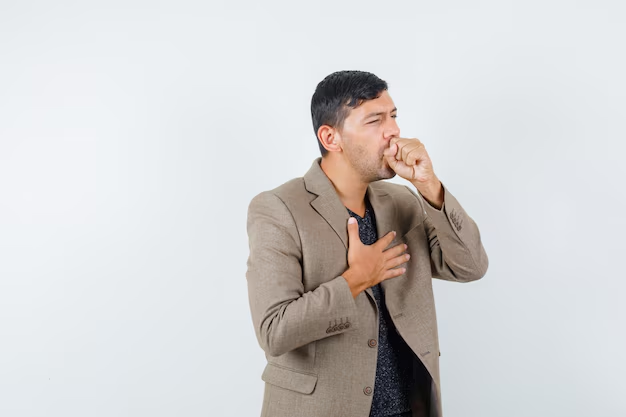Do I Have Walking Pneumonia? Discover the Subtle Signs
Have you ever had a lingering cough that you just couldn’t shake off, accompanied by mild symptoms that made you question: is this just a stubborn cold or something more? Walking pneumonia is one of those conditions that sneaks up on you when you least expect it. It's subtle, industrious, and can go unnoticed if you're not in tune with your body. If you've ever wondered, “Do I have walking pneumonia?” then keep reading to unravel the clues and insights that can help you answer that question.
What Is Walking Pneumonia?
Before diving into the symptoms, it’s important to understand what walking pneumonia is. Walking pneumonia is a non-medical term used to describe mild pneumonia, typically caused by bacteria called Mycoplasma pneumoniae. Unlike severe pneumonia, walking pneumonia doesn't bedridden you. It's the sneaky kind where you're functional enough to continue daily activities but uncomfortably symptomatic.
Causes and Risk Factors
While Mycoplasma pneumoniae is the primary culprit, other bacteria or viruses can also lead to this condition. Understanding the risk factors helps in discerning whether you're more susceptible to it:
- Close contact situations, such as schools or offices
- Weakened immune systems
- Smoking
- Chronic diseases like asthma
Recognizing the Symptoms
The symptoms of walking pneumonia are mild but persistent. Here’s what you should look out for:
- Persistent cough that may come and go, often dry or producing only small amounts of mucus.
- Low-grade fever that might hover but not spike high.
- Fatigue that doesn't seem to correlate with your level of activity or rest.
- Headaches and mild chills that feel like a stubborn cold.
- Sore throat and chest discomfort, particularly during deep breathing or coughing.
Differences from Regular Pneumonia
Regular pneumonia typically features higher fevers, more pronounced chest pain, and can often make breathing quite difficult. Walking pneumonia’s symptoms are far less severe but can still disrupt your daily routine.
How Walking Pneumonia is Diagnosed
If these symptoms sound familiar, the next logical question is: “How is walking pneumonia diagnosed?” Diagnosis primarily involves:
- Physical Examination: A doctor listens to your lungs with a stethoscope, looking for abnormal sounds.
- Chest X-Ray: Used to detect any conspicuous patterns indicative of an infection in the lungs.
- Blood Tests: To check for signs of infection.
- Microbiological Tests: Sometimes nasal or throat swabs are taken to identify the presence of Mycoplasma pneumoniae.
While these diagnostic methods are useful, the distinguishing nature of the condition often requires a high level of suspicion by the healthcare provider.
How Walking Pneumonia Spreads
Understanding how walking pneumonia spreads can help you take preventive measures. The bacteria are transmitted through respiratory droplets, such as when an infected person coughs or sneezes. Here are steps to reduce risk:
- Hygiene: Regular hand washing can minimize transmission.
- Avoid Close Contact: Stay away from those known to be infected.
- Cover Coughs/Sneezes: Encouraging proper respiratory etiquette can reduce spread.
Treatment Options
While we stay clear of medical advice, being informed about general treatment strategies can empower you:
- Rest and Hydration: Fundamental to recovery from any infection.
- Over-the-counter Medications: Can help alleviate symptoms.
- Prescribed Antibiotics: Often necessary as Mycoplasma pneumoniae is bacterial, not viral.
Always consult with a healthcare provider to determine an appropriate treatment strategy.
Importance of Seeking Medical Guidance
Ignoring persistent symptoms might exacerbate the condition or lead to complications. Seeking a professional evaluation is a wise step if symptoms don't improve with time.
Practicing Prevention
Ensuring good health practices can significantly reduce the likelihood of catching walking pneumonia:
- Healthy Lifestyle: Balanced diet, sufficient sleep, and regular exercise boost immunity.
- Vaccinations: While there's no direct vaccine for walking pneumonia, getting vaccinated against influenza does reduce the overall burden of respiratory illness.
- Smoking Cessation: Smoking damages lung tissue, increasing vulnerability to infections.
Knowing When to Seek Help
So, when is it time to put these symptoms under a professional spotlight? If you notice:
- Symptoms persisting for more than a week without improvement.
- Breathing difficulty or severe chest pain.
- A history of chronic lung conditions exacerbating.
In these instances, seeking medical advice can ensure appropriate action is taken.
Living with Walking Pneumonia
Living with walking pneumonia means understanding your body's limits and taking care not to overextend yourself:
- Pacing: Avoid strenuous activities until health fully recovers.
- Monitoring Symptoms: Keep a journal of your symptoms and any changes.
- Support Systems: Lean on friends and family for help with daily tasks if needed.
Final Insights
Navigating the subtle landscape of walking pneumonia requires attentiveness to your body’s signals. While it might allow you the capacity to “walk” through your day, respecting its impacts and responding accordingly is key to maintaining health. Stay vigilant, seek guidance where necessary, and above all, listen to what your body tells you.
Quick Reference Summary
Here’s a concise breakdown of key points to keep handy:
- 🚶♂️ Walking Pneumonia: Mild but significant respiratory infection.
- 🤒 Symptoms: Persistent cough, low fever, fatigue, sore throat.
- 🦠 Spread: Through respiratory droplets; hygiene is critical.
- 🩺 Diagnosis: Physical exam, X-rays, blood tests offer clarity.
- 🛌 Treatment: Rest, hydration, possible antibiotics.
- 🛡️ Prevention: Healthy lifestyle, hygiene, no smoking.
- ⚠️ Seek Help: Persistent or worsening symptoms? Consult a doctor.
Remaining informed and proactive about your health can transform questions into confident next steps ensuring your well-being.

Related Articles
- a Typical Pneumonia
- Can a Cold Turn Into Pneumonia
- Can a Sinus Infection Turn Into Pneumonia
- Can Amoxicillin Cure Pneumonia
- Can Amoxicillin Treat Pneumonia
- Can Baby Oil Cause Pneumonia
- Can Bronchitis Turn Into Pneumonia
- Can Covid Turn Into Pneumonia
- Can Doxycycline Treat Pneumonia
- Can Flu Turn Into Pneumonia